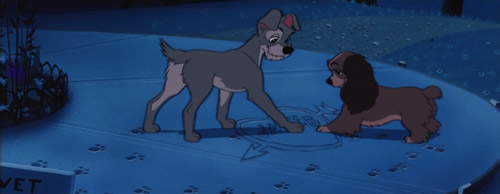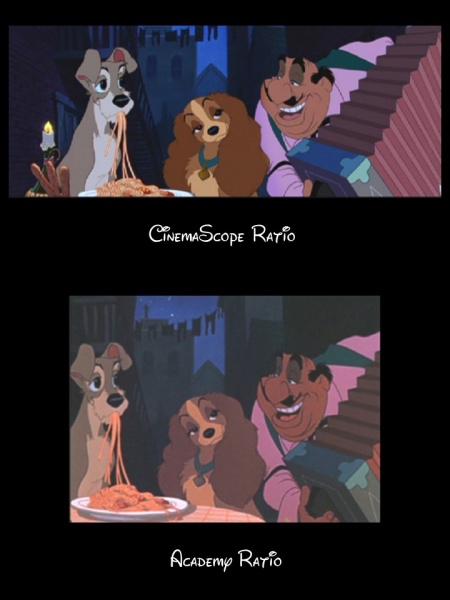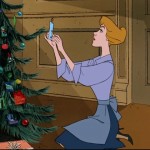The big 60th anniversary celebration this year focuses on Disneyland, but there’s another anniversary that is pretty special in the world of film history. Lady and the Tramp was the first animated feature film, released 60 years ago, utilizing CinemaScope – the original widescreen format.
The beloved film was based upon the short story Happy Dan, The Whistling Dog by Ward Greene. It tells the love story of Lady, a refined Cocker Spaniel, and Tramp, a stray mutt. Lady and the Tramp‘s iconic spaghetti scene is considered one of the most romantic scenes in cinematic history.
But, let’s get on to CinemaScope…
CinemaScope was developed by Spyros P. Skouras, president of 20th Century Fox, in 1953. As television sets became more common in American homes, fewer people were attending movies. The film studios were looking for new ways to bring the audience back to the theater. Skouras’ creation of the anamorphic lens (technique of shooting a widescreen picture on standard 35 mm film) provided a grand experience that could not be achieved at home on the small screen. Fox’s first film released in the format was The Robe (1953), due to the epic nature of the story.
Walt Disney Productions was one of the first companies to license the CinemaScope process from Fox. Disney utilized the process on the Academy Award winning short film Toot, Whistle, Plunk and Boom and the feature film 20,000 Leagues Under the Sea (1954).
Originally, Lady and the Tramp was planned to be filmed in the common Academy format ratio of 1.37:1. But, with film goers’ increasing interest in the widescreen format, Disney decided to film the movie in CinemaScope’s 2.66:1 ratio. The decision to move forward using the widescreen technology created problems for the animators. The broader space created a more realistic scene, but made it difficult to film a single character in the shot. Character groups had to be spread out over the screen in order to keep the visual field from being sparse. Animators had to remember to move the characters across the background instead of the background passing behind them. As the premier date grew closer, Disney realized that not all theaters had the capability to show a CinemaScope film. Therefore, two versions of the film were released – widescreen and Academy ratio. Due to this, layout artists had to restructure key scenes in order to keep the action in the shot.
The necessity of filming the movie in two ratios provides for the film to be enjoyed in its entirety in full screen or widescreen format. A pan and scan* format was not necessary in releasing the film for home viewing.
By the way, the opening scene in which Darling unwraps a hat box to discover a puppy is based upon an incident in which Walt Disney presented his wife, Lily, a puppy in the same manner.
*Pan and scan is a method of adjusting widescreen film images so that they can be shown within the proportions of a standard definition 4:3 aspect ratio television screen, often cropping off the sides of the original widescreen image to focus on the composition’s most important aspects.



















